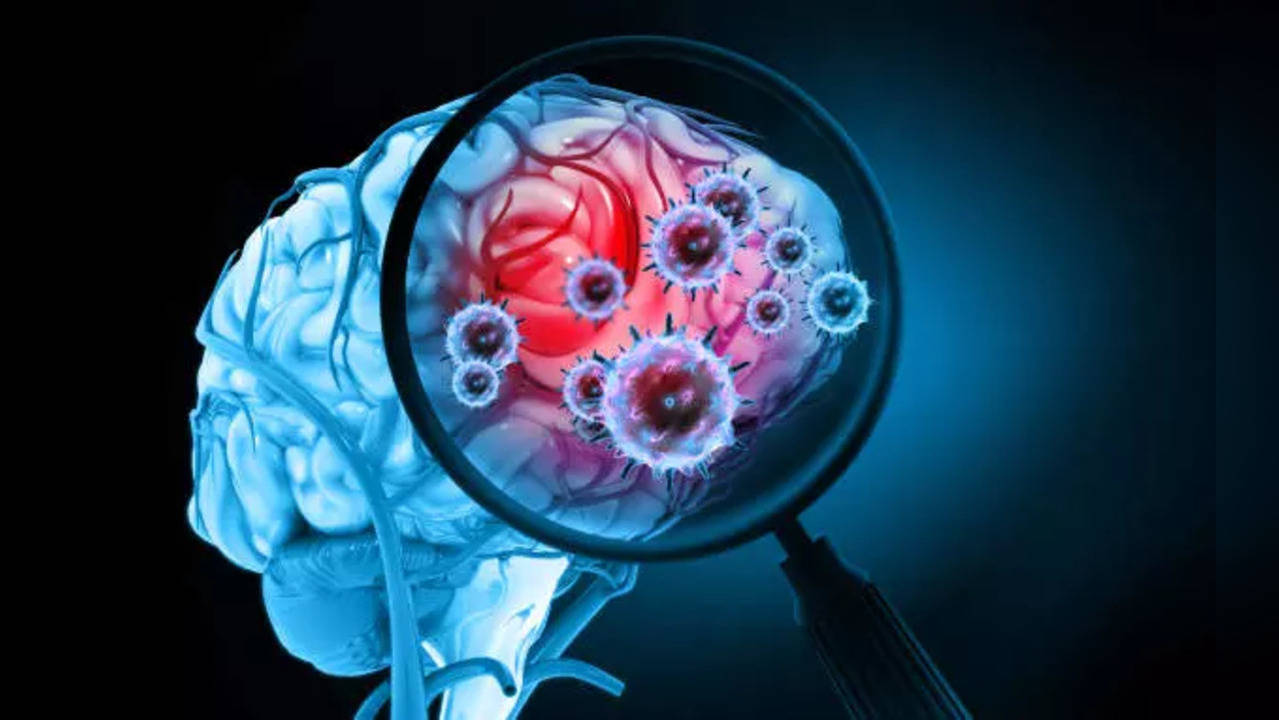Signs Of Childhood Brain Cancer Every Parent Should Know
A brain tumour in children causes symptoms when it presses on an area of their brain. Although some tumours can be life-threatening, advances in diagnosis and treatment have improved survival for many. So, it is important to know the signs and symptoms which indicate the deadly disease. Read on to know what they are.

Studies say less than 30 per cent of children with brain tumour live beyond five years
The National Institute for Health and Care Excellence or NICE in the UK has approved the use of a combination of dabrafenib and trametinib for the treatment of brain cancer, which helps reduce the side effects of chemotherapy.
The drug is said to help support children with brain tumours and improve patient survival time without the disease progressing. According to experts, in children and young people, gliomas are the most common type of brain cancer, which develops from the glial cells that support the nerve cells of the spinal cord and brain.
Studies also say less than 30 per cent of children with this tumour live beyond five years. And so, doctors say it is important to know the signs and symptoms of this life-threatening disease.
Signs and symptoms of brain tumour in children
According to doctors, the skull does not have excess room for anything other than the brain and so, brain tumours develop and expand causing extra pressure in the closed space – known as intracranial pressure.
Increased intracranial pressure is caused by extra brain tissue and blockage of the cerebrospinal fluid flow pathways. A few symptoms include:
- Early morning headaches
- Seizures
- Nausea and vomiting
- Irritability
- Lethargy and drowsiness
- Personality and mental activity changes
- Excessive sleepiness
- Increase in size of your child's head
- Issues with vision, hearing, or speech
- Balance issues
- Lack of coordination
- Sudden changes in behavior
- Weakness in your child’s arm, leg, or on one side of their body
- Seizures
- Microencephaly or enlarged head in infants whose skull bones are not completely fused
- Coma and death, if left untreated
- Brain tissue dysfunction caused by a growing tumor may cause other symptoms, depending on the tumor’s location
Types of brain tumours in children
Different types of brain tumours in children include:
- Primary
Starting in the brainMetastatic
Starting in other parts of the body and spreading to the brainBenign
Slow-growing; non-cancerous. Benign tumors can still be difficult to treat if they are growing in or around certain structures of the brain.Malignant
Cancerous. Unlike benign tumors that tend to stay contained, malignant tumors can be very aggressive. They grow rapidly and can spread to areas near the original tumor and to other areas in the brain.
What causes brain tumour?
Doctors said when healthy cells multiply fast and grow out of control, they form neoplasm, which relates to:
- Genetic changes in a cell
- Inheritance of cancer-forming genes
- Prior radiation exposure (for another type of cancer)
- There is a link between some pediatric brain tumours and cancer syndromes
Trending:
End of Article
Subscribe to our daily Lifestyle Newsletter!
Related News





Over 400 Indian Food Products Adulterated With Pesticides: Report

Are You Carefree Or Have Trouble Expressing Yourself? Find Out Your Traits With This Personality Test

What Is Chemical Pregnancy? Expert Shares Symptoms, Risks, And Debunks Misconceptions

Sashakt's AskYourMom Campaign: A Call to Action on World Ovarian Cancer Day

Tired Of Those Love Handles? 5 Effective Exercises To Get In Shape









